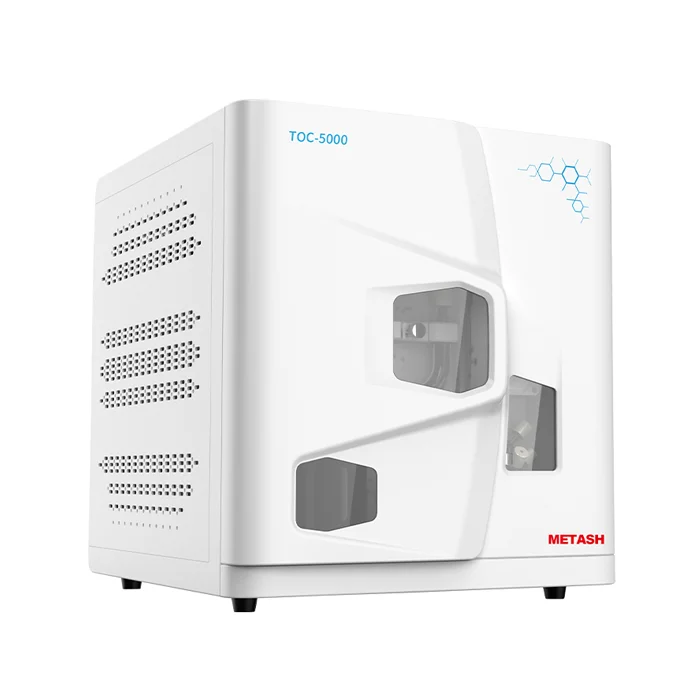- This topic is empty.
-
AuthorPosts
-
2025-10-16 at 10:02 am #26363
In the realm of water treatment, ferrous chloride has emerged as a crucial inorganic compound, playing a significant role in purifying water by removing heavy metals and organic pollutants. However, the purity of ferrous chloride is of utmost importance, as even trace amounts of organic impurities can compromise its efficacy and safety. In this blog post, Metash, one of the high performance TOC analyzer manufacturers, will share the analysis of ferrous chloride using total organic carbon analyzer.
Unique Properties of Ferrous Chloride
Ferrous chloride, with its distinct chemical characteristics, exists in various physical forms depending on its hydration level. The anhydrous form is a yellow-green, hygroscopic crystal, while the tetrahydrate is a transparent, blue-green monoclinic crystal. It is highly soluble in water, ethanol, and methanol, slightly soluble in acetone, and insoluble in ether. In moist air, it readily oxidizes to ferric chloride, and in acidic solutions, it may hydrolyze to form ferric hydroxide colloids. Given its melting point of 677°C and boiling point of 1023°C, precise quality control is essential to ensure its stability and effectiveness in various applications.
Significance of Measuring TOC
The purity of ferrous chloride is critical for several reasons:
– Environmental Compliance: The presence of organic impurities can diminish the effectiveness of water treatment processes, potentially leading to non-compliance with environmental regulations.
– Quality and Safety: Industrial-grade ferrous chloride requires high purity, while pharmaceutical-grade products must be free from contaminants to ensure patient safety.
– Process Optimization: As a reducing agent, the TOC content in ferrous chloride can influence reaction efficiency. Accurate measurement of TOC can enhance process stability and cost-effectiveness.
Thus, determining the TOC content in ferrous chloride is a vital step in assessing its quality and ensuring it meets the necessary standards for its intended applications.

Experimental Design and Methodology
To accurately measure the TOC content in ferrous chloride, a TOC analyzer, specifically the TOC 5000 RD, was employed. This instrument is renowned for its precision and reliability in analyzing organic carbon content. The experimental setup included the following components:
Instruments and Reagents
– TOC 5000 RN Total Organic Carbon Analyzer
– Sodium Bicarbonate (Ultra-pure Grade)
– Potassium Hydrogen Phthalate (Primary Standard Reagent)
– Phosphoric Acid (Ultra-pure Grade)
– Anhydrous Sodium Carbonate (Primary Standard Reagent)
– Hydrochloric Acid (Ultra-pure Grade)
Analytical Conditions
– TOC Host Carrier Gas Flow: 180.0 ml/min
– TOC Host Carrier Gas Pressure: 0.200 Mpa
– Catalyst: Platinum
– Carrier Gas: Oxygen (≥99.995%)
– TC Combustion Tube Temperature: 680°C
– Detector: Non-Dispersive Infrared Detector (NDIR)
Sample Preparation
A 5 ml sample of ferrous chloride was diluted to 100 ml with ultrapure water. The TOC method in the software was then used to measure the TOC content (TOC = TC – IC). Additionally, a spike recovery experiment was conducted to verify the reliability of the data.
Results and Discussion
Standard Curves
IC Standard Curve
An inorganic carbon standard storage solution with a concentration of 1000 mg/L was prepared using anhydrous sodium carbonate and calcium bicarbonate. This solution was further diluted to a working solution of 100 mg/L. Using the instrument's six-way valve auto-dilution function, an IC standard curve was plotted.
The IC standard curve exhibited a linear correlation coefficient (R²) of 1, indicating excellent linearity.
TC Standard Curve
An organic carbon standard storage solution with a concentration of 1000 mg/L was prepared using potassium hydrogen phthalate. This solution was diluted to a working solution of 100 mg/L. By mixing equal volumes of the inorganic and organic carbon working solutions and diluting to 100 ml, a total carbon standard solution with a concentration of 200 mg/L was obtained. Using the instrument's six-way valve auto-dilution function, a TC standard curve was plotted.
The TC standard curve also demonstrated a linear correlation coefficient (R²) of 1, confirming its reliability.
TOC Content in Ferrous Chloride
Each sample was tested three times, and the resulting spectra are shown in Figure 4.
The results indicated that the TOC content in ferrous chloride was accurately determined using the TOC 5000 RD analyzer. The method proved to be simple, rapid, and highly reproducible, with excellent accuracy.
Conclusion
The use of the TOC 5000 RD analyzer to measure the TOC content in ferrous chloride offers a robust and reliable approach. This method ensures that ferrous chloride meets the required purity standards for effective water treatment and other industrial applications. By employing the difference method (TOC = TC – IC), the analyzer provides precise data, facilitating quality control and environmental compliance. For further information on the TOC 5000 RD analyzer and its applications, contact the professional team at Metash Instruments for personalized solutions.
http://www.metashcorp.com
Metash -
AuthorPosts
- You must be logged in to reply to this topic.